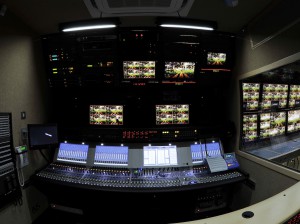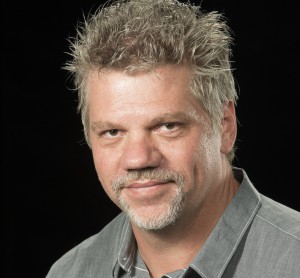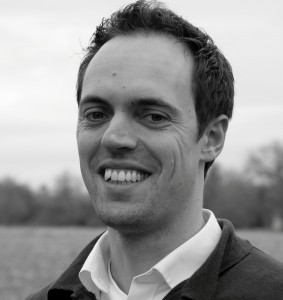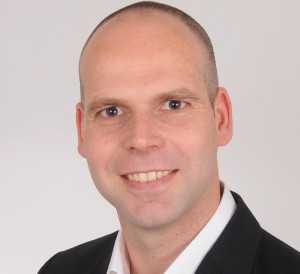SVG Europe’s Audio Console Roundtable (part I): Fairlight, Lawo, Salzbrenner Stagetec discuss design evolution and IP momentum

SABC (South African Broadcasting Corporation) has installed Lawo consoles in a number of its OB facilities
Smaller, smarter, faster: audio consoles for broadcast have evolved at a rate of knots since the transition from analogue to digital got underway in earnest. With IP-based operation expected to have a dramatic impact on workflows over the next few years, it seemed like a timely moment to talk design drivers and evolving customer expectations with the leading lights of the console world.
In the first of a two-part roundtable, SVG Europe puts the questions to: Tino Fibaek, CTO at Fairlight, whose latest introductions for broadcast include the EVO.Live console; Christian Struck, senior product manager at Lawo, which makes an extensive range of broadcast-oriented solutions including the flagship mc266; and Bjorn van Munster, product manager/sales, and Sebastian Schmidt, sales manager DACH, at Salzbrenner Stagetec, which recently introduced the ON AIR flex broadcast solution.
First of all, how would you characterise the current level of demand for high-end broadcast consoles?
Fairlight: It is steady. But Fairlight believes it is shifting now that post-produced object-based audio is finding its way into the consumer [space]; we think it is only a matter of time before this trend is replicated in live.
We also believe we will see a shift going from traditional high-end consoles to a new paradigm of converged live/post consoles. Budget pressures are high; you cannot afford to have a console or truck inactive, so more cost-effective and/or converged consoles are the way to go.
Lawo: [There is a clear desire to let] TV and radio audiences experience the atmosphere of sports events at home, and by constantly exploring the extremes of broadcast technology the sports broadcasting industry has always kept the innovation wheel turning. High demands on production quality have led to a constant need for high-end broadcast consoles, and Lawo is proud to have been able to meet these high demands [with] its products since the company was founded more than forty years ago.
Salzbrenner Stagetec (van Munster): Formerly the focus of broadcast consoles was on sound quality and there was a clear border to the video equipment. Since the audio data is embedded into a digital serial video stream (SDI/HDSDI), this clear border disappears. So the audio routing system behind the consoles must have the possibility to handle digital serial video signals as well as audio streaming. The meterbridge, which these days is based on TFT screens, must have the possibility to display other external signals in different formats. The operator gets a lot of information from other systems like intercom, video, wireless microphones, etc, and has to handle this. So all in all the sound console is more and more a communications centre that handles audio, but also lots of other information.
To what extent do you regard the requirements of sports broadcast professionals as a driver of console demand?
Fairlight: It is high because in terms of live broadcast, sport is the dominant source. For example, object-orientated live content enables the end-consumer to have much more control over their viewing experience.
Lawo: The fast video cuts of the evermore sophisticated directing of broadcasts when covering sports events and the modern viewing habits require that audio has to be automated to be as fast as the video-automated mixing, ie. audio-follow-video is one of the basics of a top state-of-the-art broadcast audio mixing console. Furthermore, modern workflows in today’s complex production environments require global control – [and must be] fast and efficient. For the audio this also means that routing has to be an integral part of the console – a route Lawo has always followed in developing its mixing consoles. The company has also put much weight on open architecture by providing comprehensive control, eg. by interfacing via Ember+.
Salzbrenner Stagetec (Schmidt): We have a very close contact to the sport broadcast professionals who use our technology, and from each big sport event we get feedback. One of the most interesting things is that at big sport events the dark fiber is gone more and more. Because the dark fiber is too expensive it will be replaced by a network based on IP structure with a high bandwidth. For us the indication [is] to move to Dante.
In general, how do you feel the core requirements of OB and sports broadcast customers of their audio consoles have changed in recent years?
Fairlight: The flexibility offered by different processing plug-in technologies in post has raised the levels of expectation within the live production sector. Add to this the flexibility that will become available with the proliferation of AoIP, and you suddenly have a very different landscape of applications.
Lawo: Whereas years ago Lawo was a pioneer in making audio routing an integral part of the mixing console, this is now seen as a standard today. Also, like Lawo consoles, providing various redundancy levels – DSP, routing, surface control – has become a growing demand during the last decade as broadcast productions have become a lot larger and more complex. There is more money involved, which means evermore efficient and flexible workflows as well as highest [possible] reliability and best quality results. And besides DSP power, routing capacity, redundancy possibilities and overall control, there is another major issue which has become more important for customers: the operator/console interface. The control surface must be intuitive and fast-operable; the learning curve has to be short. Operators shall work with tools that serve not just the purpose in a technical way, but also support the sound engineers by their very demanding work.
Salzbrenner Stagetec (Schmidt): The core requirement has changed rapidly since the sport broadcasters move to the HD format. That means an audio console gets not only mono and stereo signals – there are some other formats available now like 5.1, 5.0, 4.0, 3.1, 3.0 stereo and mono. The number of inputs increases as well as the number of outputs (busses). There is a demand to new functions such as SPILL, surround panning, loudness measurement (R128), etc. A lot of external machines change the connecting format from single format to a multi-format, eg. AES/EBU to MADI or Dante.
What do you regard as your most significant audio console development of recent years with relation to sports – and why?
Fairlight: Three-dimensional audio, object-orientated audio and converged consoles. We take the audio to a new dimension, we deliver a more exciting and personal experience to the consumer, and we increase the return on investment.
Lawo: This is surely the integration of IP Layer 3 as backbone technology into the existing mc² series. Audio mixing consoles integrating native IP are not just providing interfacing to IP networks. As integral [being] part of IP infrastructures, the Lawo mc² feature set reaches far beyond the console itself and, in addition to simple data exchange for example, this comprises the console’s complete availability and full overall control throughout the IP network.
Salzbrenner Stagetec (Schmidt): In sport transmissions the remote production is the hit-breaker number one. That means the equipment is on site by the sport event and can be even controlled on site, or remotely from the control room in the mother country. This can be an [opportunity] to save some costs for the broadcaster. The operator is more flexible. Especially for this we developed a mixing console named ON AIR flex, which is completely based on an IP structure.
To what extent do you expect IP-based operation to revolutionise broadcast audio console usage over the next few years?
Fairlight: To a very large extent. We have two different angles: one is the distributed I/O based on IP infrastructure, whilst on the control side the IoT is going to open up a lot of possibilities. SMPTE 2071, with the service discovery concept, will open up a whole new world of systems integration.
Lawo: Like the revolution in telecommunication by applying IP technology which led to IP telephony and new opportunities, broadcast embracing IP technology will [also] revolutionise the complete industry and open up new horizons. By translating conventional structures into IP-based infrastructures there will emerge completely new workflow options beyond the ideas and visions today. With Lawo’s RAVENNA/AES67 broadcast audio and video products, customers can already today use new, efficient and flexible workflows such as remote production, which was successfully realised for the German public broadcasters during the Brazil football event. The decentralised production – use and control any device anywhere within the IP network – means there [is a need] to achieve a new quality of efficiency.
Salzbrenner Stagetec (Schmidt): As you see in the market, more and more functions of the console can be remotely controlled by a tablet PC or touchscreen. The bandwidth of the IP transmission channels goes higher and higher (1G, 10G…). The data rate of the transmission formats can be reduced by effective algorithm, eg. (MPEG-H). In the next years we will see what will happen at the big sport events.
All in all the operator gets more and more information from the system and has to handle this. He also needs some help from the system (assistance tools) or from some colleagues wherever they are (IP extension).
How important is it to support multiple networking technologies in your consoles at this time of transition in the industry?
Fairlight: We have signed up as partners with Audinate, and will soon be announcing Dante-enabled products. In the long-term, we are expecting that the AES67 [interoperability] initiative will help simplify the diversity on the market.
Lawo: We are convinced that the focus must be on supplying open standards for the broadcast industry in the IP age. Lawo fully supports any of these efforts as only open standards will provide a dependable basis for the customers to rely on, and thus for their investments into future development. The basis for a new broadcast infrastructure are no-licensing and manufacturer-independent standards with a distributed knowledge base. We regard this as indispensable for the sound growth into the IP age. Lawo has implemented the RAVENNA technology in its products, and that already includes the AES67 open standard.
Salzbrenner Stagetec (van Munster): Interoperability is important. Therefore Nexus (audio matrix) offers interfacing to basically all standard protocols in the industry: analogue: Line in, Line out,Mic; digital based (MADI, AES/EBU, ADAT,TDIF); digital IP based (Dante, AES67); video embedded (HDSDI MPTE 259M (SD), SMPTE 292M (HD), and SMPTE 424M/425M (3G); and Dolby embed, deembed, etc. Different networking technologies will happen: basically with Nexus and Dante we connect two matrix networks to each other. Accessibility is important and good GUI design that helps people keeping the overview.
Delivering more and more features in an increasingly compact form-factor has been an important influence on console design in recent times. But what do you think will be the emerging factors that affect R&D in the coming years?
Fairlight: The power of modern FPGAs opens up a wide range of opportunities, [such as] the Internet of Things, and audio-over-IP complements this with a very wide range of connectivity. Combining the two together with our highly customisable user interface leads to some very interesting product propositions.
Lawo: In our opinion, the focus will have to be on easy practicability for the integration of consoles into IP networks which will allow new workflows – again as an example the wide application of remote production. In addition to the new developments we must keep the issue of ‘ease-of-use’ in focus [too]: the architecture must remain easy to handle for the staff involved in the productions; and the operation of the consoles must remain user-friendly despite the even more complex setup involving IT technology as well.
Salzbrenner Stagetec (Schmidt): By handling more and more information on the console, the interactivity will be a very important point. For this the touchscreen will be a good tool. Some assistance tools [will also be] very nice.
Finally, please offer us a few hints about what we can expect to see from you on the showfloors of NAB and IBC this year…
Fairlight: We can certainly talk about NAB: 3D audio, large format live consoles, converged live/post consoles, and post systems with huge track counts and a new level of bus and monitoring capability. Regarding IBC, we have something else quite special for this, but it is too early to disclose.
Lawo: NAB will see our complete range of audio and video products, all based on RAVENNA/AES67 technology. The highlight will be the High Density version of the successful IP-based mc²56 audio mixing console – providing twice the number of faders on the same footprint. This makes it even more ergonomic and suitable for all installations in space-limited environments like trucks and small SCRs that require the full DSP power, routing capacity and redundancy options.
Salzbrenner Stagetec (van Munster): We can’t describe all of it here but we will show some new things on ON AIR flex for the IP-based remote productions [at] the next exhibitions.



